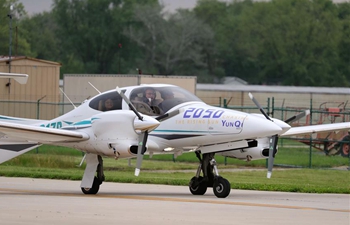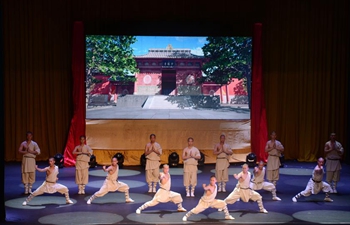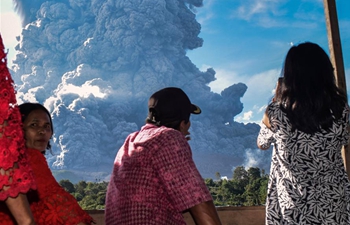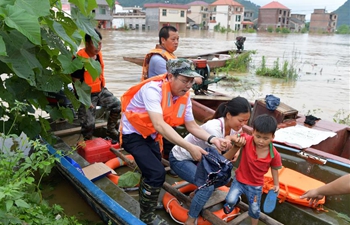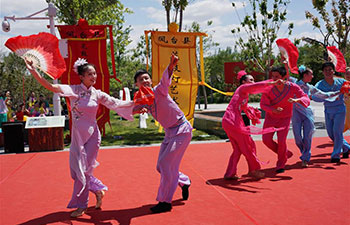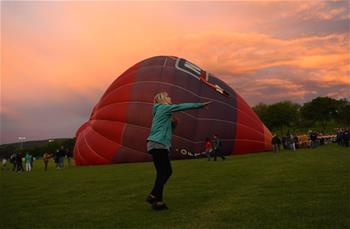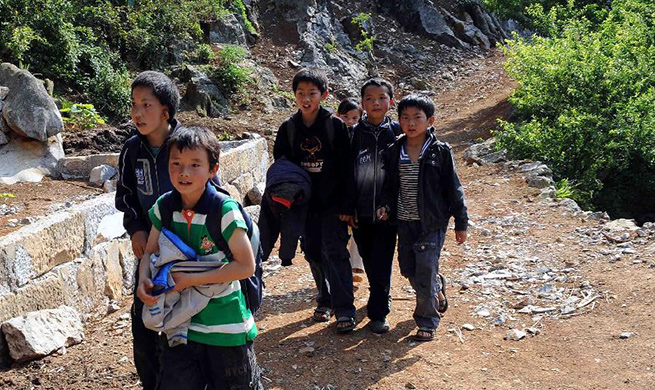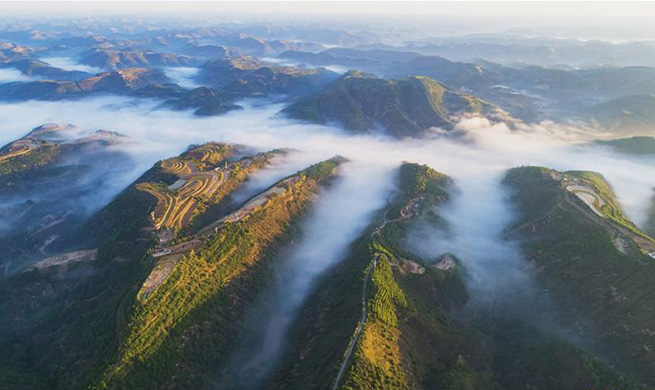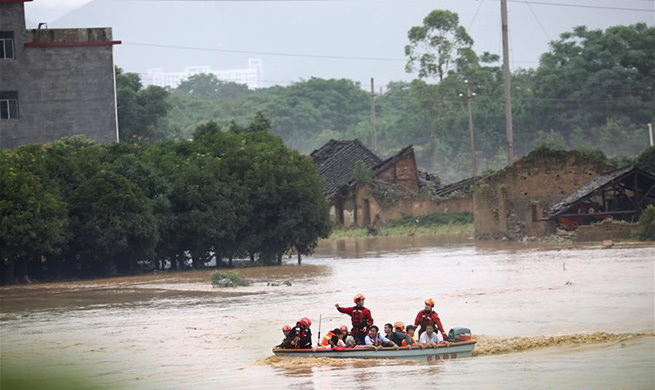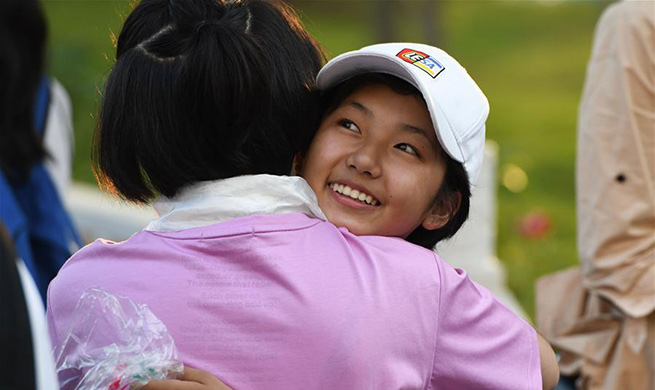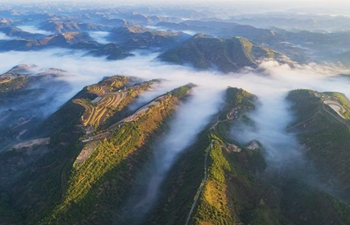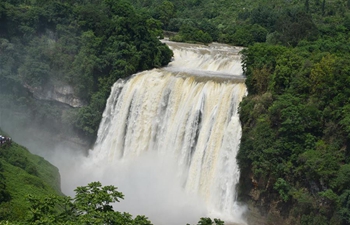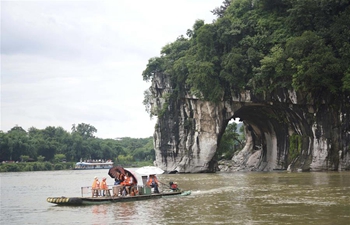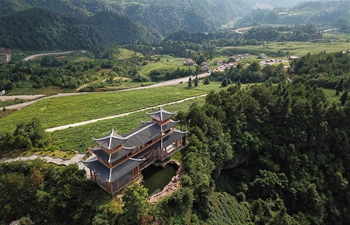HONG KONG, June 10 (Xinhua) -- "Because it's there." These are the famous words of climber George Mallory, who perished on Mt. Qomolangma almost a century ago.
Why climbing? Why Mt. Qomolangma? Every person who seeks to step on top of the world may have different answers.
For members of the Qomolangma team Hong Kong China 2019, climbing the mountain is not merely for the sake of conquering it, nor for risking one's life.
"A lot of people want to reach the summit of Mt. Qomolangma. They feel that they can show off, or they can express themselves. For us, mountain climbing is a way of life. Even if we did not go to Mt. Qomolangma, we climb other mountains every year," team leader Zeng Zhicheng said in a recent interview with Xinhua.
Zeng was the first climber from Hong Kong to reach the summit of Mt. Qomolangma, from both the south and the north sides. He had previously made it to the summit of the mountain three times. Under his guidance, the Qomolangma team Hong Kong China 2019, comprising Zeng, captain Lu Zechen, vice captain Zhang Zhihui and Li Leji, successfully reached the summit of Mt. Qomolangma on May 22.
"Before I climbed Mt. Qomolangma for the first time, I had been climbing mountains for 19 years. Mountain climbing is a part of our lives. Every mountain is different and represents a different challenge. Mountain climbing is a way of life that helps you grow and face difficulties in life more calmly," Zeng said.
"Climbing Mt. Qomolangma is the dream of every climber, but I don't think a human being can truly conquer a mountain. My understanding of conquering is that you can control something. However, the mountain can't be controlled. For example, the mountain gives us a chance, and this time we have successfully put our feet on top of the world. But if I go again next year, I will not necessarily succeed," Lu said.
"People should consider the awesomeness of nature and the relative insignificance of man. This is an attitude that the mountain teaches us," he added.
Zeng said that climbing Mt. Qomolangma is not as simple as people may think. This time, his team prepared for nearly one year before even setting foot on the mountain. After careful planning, the team was established in July 2018 and reached the Aconcagua peak in South America in December.
According to Zeng, his team departed for Nepal on April 3, in order to adapt to the local environment and climate, and to wait for favorable weather.
On May 1, the team members first practiced basic techniques of climbing the glaciers, such as climbing aluminum ladders and over-ice gaps under difficult conditions. On May 2, they headed to Camp 2 and started the first round of climbing. However, during that period, it was reported that the weather would be bad, and that strong winds were on the way, meaning they had to return to base camp.
Two of the team members were frostbitten when they reached the summit. "When we reached the top, two of us had slight frostbite. Fortunately, the injuries were not serious, and they recovered after returning," Li said.
During the climbing and retreating, the team also encountered a traffic jam of sorts.
"We set off from Camp No. 4 at 11:30 on the 21st, and the whole route was illuminated by the lights on the heads of climbers," Zhang said. "The number of climbers was quite large. We waited for half an hour to reach the summit. When we descended, we had to wait for about 45 minutes."
Zeng said that one of the reasons for the backlog was bad weather, but a more important reason was that climbing Mt. Qomolangma has become more and more commercialized, adding that tighter controls are needed to ensure that mountain climbing companies are correctly licensed.
On May 22, more than 200 people successfully scaled Mt. Qomolangma. Due to the large number of people, many were forced to wait for a long time during the ascent and descent.
Climbing the mountain has long been a dangerous undertaking. According to statistics from the Nepalese government, 14 people died in this year's spring climbing season, and another three were missing.
Lu said they saw two dead bodies on the way from No. 3 to No. 4 camp.
Zeng said inadequate preparation and lack of experience were usually the reasons for the death of climbers. He called on those who want to climb Mt. Qomolangma to prepare well, both physically and psychologically.
"Mountain climbing, going to the top of the world, should not mean wasting lives," he said.
Will they climb Mt. Qomolangma again in the future?
"Unless there are special reasons, I will not climb Mt. Qomolangma again," Zeng said. "But my son is 15 years old and told me this year that he hopes to climb mountains one day. So if there is a chance in the future, I might go with him."
"I think [climbing Mt. Qomolangma again] may not be for now," Li said. "There are many other mountains in Europe, America and Africa that are waiting for us to climb."
For all the team members, the experience of being on top of the world was unforgettable.
"Of course, on top of the world, you feel very happy. However, everyone was actually very calm at the time. It was dawn, we were looking at the light of the sky, and the sun came out." Lu said.




